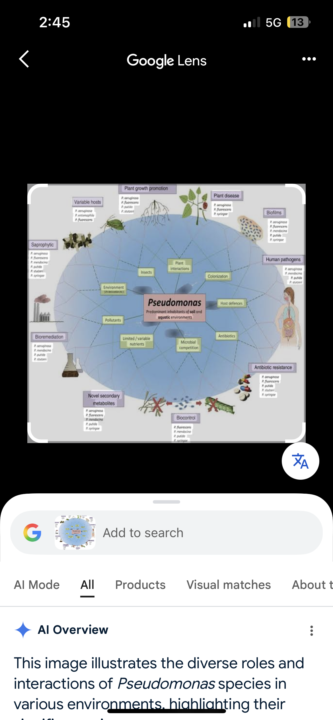Activity
Mon
Wed
Fri
Sun
Oct
Nov
Dec
Jan
Feb
Mar
Apr
May
Jun
Jul
Aug
Sep
What is this?
Less
More
Memberships
Science Nerd
97 members • Free
Published Researcher (Free)
4.4k members • Free
AI Automation Skool
1.8k members • Free
AI Foundations
976 members • $97/m
7 contributions to Science Nerd
Dinosaur Infographic
Hey Nerds, I found an infographic that gives a timeline of dinosaurs. https://www.dinopit.com/dinopits-dinosaur-infographic-timeline/

Topic of the Week: Dinosaurs
What's your favorite dino and why? And do you have a scientific or cool resource about it? Dinosaurs are a diverse group of reptiles that dominated Earth’s ecosystems during the Mesozoic Era (about 252–66 million years ago). They evolved into two major groups: Saurischia (like T. rex and Velociraptor) and Ornithischia (like Triceratops). Dinosaurs are famous for their size, diversity, and extinction at the end of the Cretaceous period, likely caused by a massive asteroid impact. Birds are the modern descendants of theropod dinosaurs. My favorite is the Parvicursor, the tiniest dinosaur. 39 cm long, 32 grams, the size of a ginny pig
2 likes • 3d
This YouTube channel goes in-depth in a lot of different dinosaurs (there were soo many dinosaurs!). I have always found pterosaurs to be mind blowing, I love the Quetzalcoatlus, but the Thalassodromeus might be less known and it’s still a very curious organism: https://youtu.be/IxMexA9ay-U?feature=shared
Real-Time Environmental AI: Transforming Video Streams into Scientific Datasets 🌲🐦🪸
Hi everyone, For those of you working on environmental projects or applications. I've recently developed an autonomous monitoring system that converts live environmental footage into comprehensive species observation records, generating 72 standardized variables per observation through coordinated AI analysis. Key Capabilities: - Automated species identification with behavioral and seasonal analysis - Environmental threat detection and habitat quality assessment - Real-time integration of climate, conservation, and geographic databases - FAIR-compliant scientific metadata generation - Consistent multi-species processing through spatiotemporal optimization - Scalable and customizable features for straightforward integration Research Applications: The system serves diverse monitoring needs: terrestrial ecological sites tracking species phenology and climate responses, marine research facilities monitoring biodiversity and ecosystem health, conservation programs requiring rapid habitat assessments, and citizen science projects where volunteers can contribute to standardized scientific databases. Output integrates directly with institutional data management systems and research workflows. Open to collaborating with research institutions interested in deploying autonomous monitoring solutions. More details here: https://www.linkedin.com/posts/andy-portalatin-97b40bb6_roboflow-n8n-airtable-activity-7373076825230512128-3gvS

2 likes • 10d
@Lorena Gonzalez I truly appreciate it! 🙏🏼 If you would eventually like to try it out for your own use case, I wouldn’t mind sharing the workflow and making short tutorials to illustrate how to use and customize them. My goal is to make it open-source by publishing it as a GitHub repository, but I am learning/working on how to create a professional GitHub repository. Nonetheless, I would be honored to see that it helps other scientists. 🌱
OMG, This new Discovery of Dinosaur is Amazing.😍
https://www.youtube.com/watch?v=TEeCFl0MJ0A
1 like • 19d
@Dr. Maria Nagy your question kept me thinking, and I did a more thorough search. The little dots are described in literature as “radial beads”, and it’s a characteristic morphological trait in Barrettia monolifera. Rudist bivalves like Barrettia monolifera, “disappeared in the Caribbean 1.5 million years before the Cretaceous-Paleogene boundary, while microbiostratigraphic analyses suggest extinction there occurred at 2.5–3.0 million years” Reference: https://www.cambridge.org/core/journals/journal-of-paleontology/article/taxonomy-and-paleobiogeography-of-rudist-bivalves-from-upper-cretaceous-strata-gulf-coastal-plain-and-puerto-rico-usa/83C432E6B1D4588A5D49CAF415FA08E2
Topic of the Week: Soil Microbes
What is your favorite soil microbe and why? I love Pseudomonas aeruginosa, bc of its communication abilities(Quorum Sensing), pyocynin production, and its infective ability as an opportunistic pathogen. https://www.biomerieux-industry.com/en-us/node/771

2 likes • 22d
This is a fascinating read, thank you for sharing! Although my knowledge in soil microbes is limited, I found the Photorhabdus luminescens to be deeply intriguing, particularly because it lives in the stomach of nematodes, and when the nematodes infects an insect, this bacteria turns lethal for the insect hosts. What mostly blew my mind was the connection between 3 different species, but I know that microbes have a plethora of unique and complex mechanisms. https://link.springer.com/article/10.1007/s10526-023-10228-z
1-7 of 7
@andy-portalatin-2171
Marine Biologist / STEM Educator / Computer Vision Engineer / AI Agent Student
Active 23m ago
Joined Aug 31, 2025
Powered by



